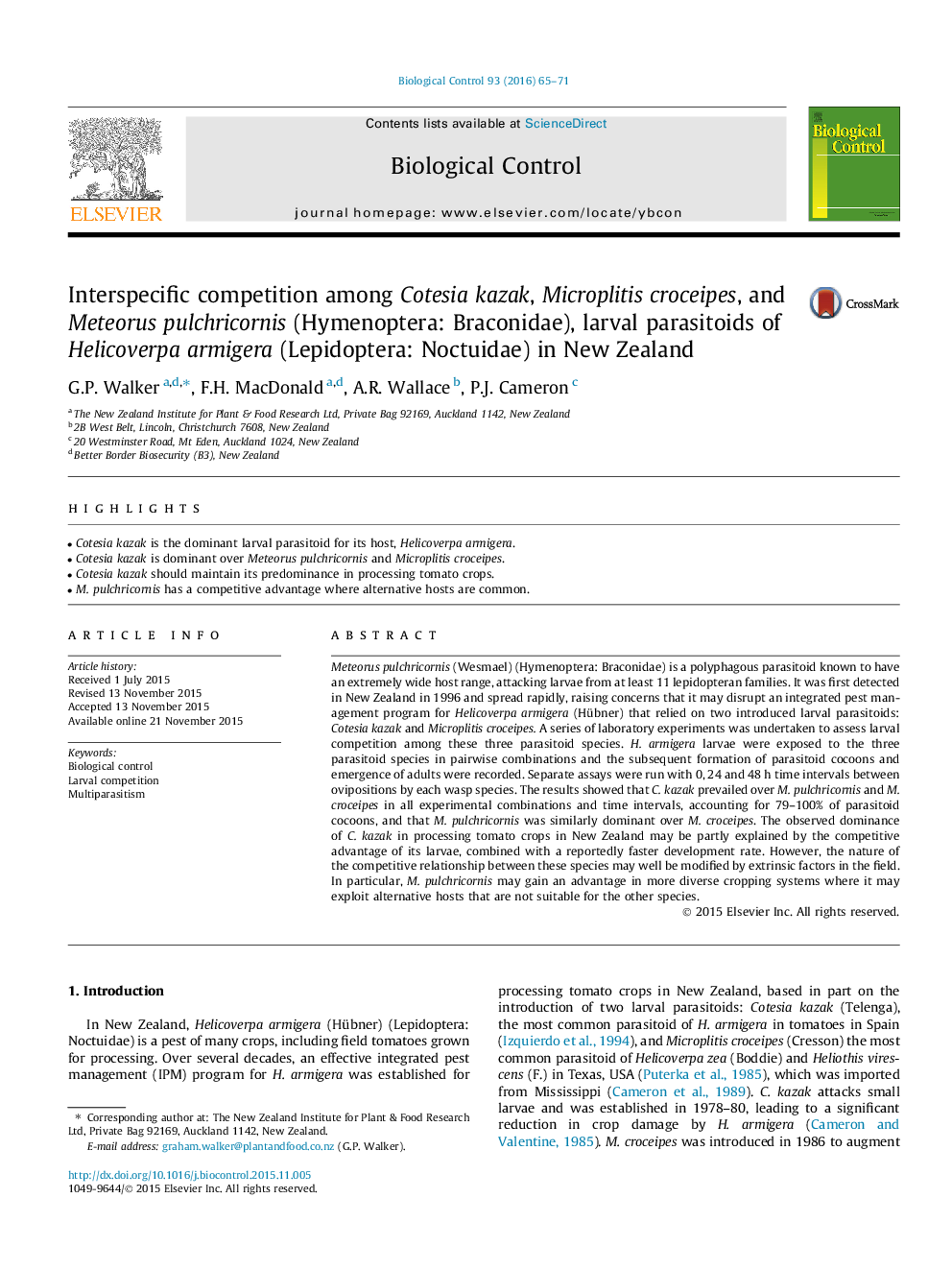| کد مقاله | کد نشریه | سال انتشار | مقاله انگلیسی | نسخه تمام متن |
|---|---|---|---|---|
| 4503655 | 1624241 | 2016 | 7 صفحه PDF | دانلود رایگان |

• Cotesia kazak is the dominant larval parasitoid for its host, Helicoverpa armigera.
• Cotesia kazak is dominant over Meteorus pulchricornis and Microplitis croceipes.
• Cotesia kazak should maintain its predominance in processing tomato crops.
• M. pulchricornis has a competitive advantage where alternative hosts are common.
Meteorus pulchricornis (Wesmael) (Hymenoptera: Braconidae) is a polyphagous parasitoid known to have an extremely wide host range, attacking larvae from at least 11 lepidopteran families. It was first detected in New Zealand in 1996 and spread rapidly, raising concerns that it may disrupt an integrated pest management program for Helicoverpa armigera (Hübner) that relied on two introduced larval parasitoids: Cotesia kazak and Microplitis croceipes. A series of laboratory experiments was undertaken to assess larval competition among these three parasitoid species. H. armigera larvae were exposed to the three parasitoid species in pairwise combinations and the subsequent formation of parasitoid cocoons and emergence of adults were recorded. Separate assays were run with 0, 24 and 48 h time intervals between ovipositions by each wasp species. The results showed that C. kazak prevailed over M. pulchricornis and M. croceipes in all experimental combinations and time intervals, accounting for 79–100% of parasitoid cocoons, and that M. pulchricornis was similarly dominant over M. croceipes. The observed dominance of C. kazak in processing tomato crops in New Zealand may be partly explained by the competitive advantage of its larvae, combined with a reportedly faster development rate. However, the nature of the competitive relationship between these species may well be modified by extrinsic factors in the field. In particular, M. pulchricornis may gain an advantage in more diverse cropping systems where it may exploit alternative hosts that are not suitable for the other species.
Journal: Biological Control - Volume 93, February 2016, Pages 65–71